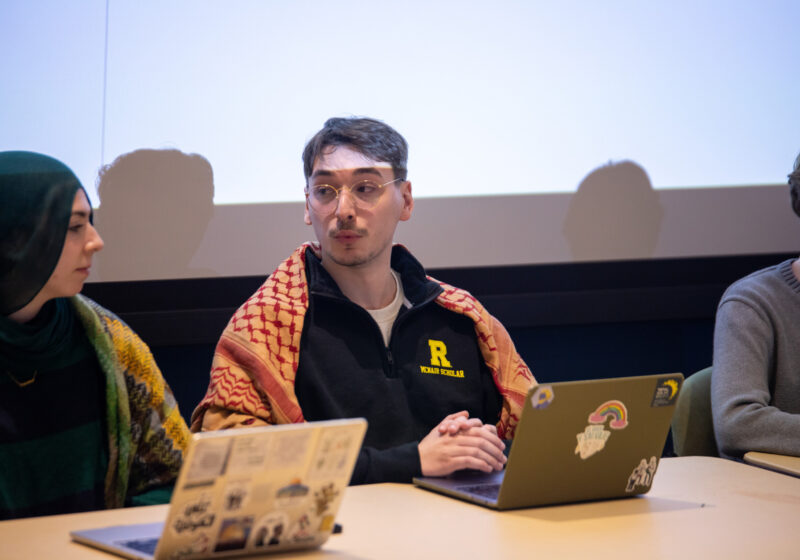Earth and Environmental Sciences Professor John Kessler recently returned from a two-week research expedition in the Gulf of Mexico, where he had been investigating the aftermath of the 2010 British Petroleum (BP) oil spill. Kessler’s research took him on board the E/V (Exploration Vessel) Nautilus, a scientific research vessel that operates two remotely-piloted submarines for deep-sea exploration. The expedition was funded by the Gulf of Mexico Research Initiative, an institute that was founded to research the effects of the BP oil spill.
Kessler’s primary field of research is chemical oceanography. Most of his work deals with the natural release of methane from the ocean floor, which is thought to contribute to global warming.
“Methane is a very potent greenhouse gas,” Kessler said. “The largest natural reservoir of methane, which is natutral gas, is in the ocean floor [and] the ocean sediments.” Kessler noted that the global warming of the Earth could destabilize these reservoirs, releasing methane from the sea floor at faster rates and thus contributing to further global warming. “There’s a little bit of geologic evidence that that has occured in the past,” Kessler said, calling the mechanism a “positive-feedback loop.”
Kessler was joined on the E/V Nautilus by colleagues from the Woods Hole Oceanographic Institute, a private research institution located in Massachusetts, and from Texas A&M University. He was also accompanied by two UR graduate students, Eric Chan and Mihai Leonte, who work in Kessler’s research group.
The scientists from Woods Hole and Texas A&M were studying the physics of the spill. They were interested in finding whether the oil had dissolved near the sea floor or in shallower water, which could provide clues to the effects of the spill.
“Once it’s in the water, that’s where I kind of come into play,” Kessler said. His part in the research dealt with what happened to the oil and methane after it was dissolved in the water. One hypothesis is that the dissolved gas molecules float to the surface, where they evaporate into the atmosphere. Another hypothesis is that the gases might sink, coating the ocean floor. Yet another possibility is that marine microorganisms feed on the dissolved oil and methane gas.
“After the hydrocarbons were released to the environment, where did they go and what happened to them? That’s kind of the main focus of our project,” Kessler explained.
The E/V Nautilus carries two unmanned sumarines, that it uses to conduct ocean research. The ROV Hercules is the larger of the two and is the primary research sub. The secondary sub is called the ROV Argus and is mainly used in a support role. Both subs are linked to the E/V Nautilus by tethers and control cables. The subs are operated by a team of 10-12 experts aboard the E/V Nautilus, not by the visiting researchers. “They’re not handing us a joystick,” Kessler said. He said that his role, and the role of the other scientists, was to direct the exploration that was carried out by the E/V Nautilus crew and submarines.
In one rare encounter on the research trip, the Hercules sub encountered a sperm whale 1,962 feet below the ocean’s surface, off the coast of Louisiana. A video of the encounter, taken with the Hercules and Argus submarines’ onboard cameras, shows the whale approaching the vessel and circling it for several minutes. “He was really checking us out,” Kessler said. “He was very curious.”
Other videos from the expedition show methane bubbles, oil and even chunks of solid methane rising from cracks in the sea floor. Kessler explained that the tremendous pressure at the bottom of the ocean, combined with very cold temperatures, can turn the normally gaseous methane into a solid. These and other videos can be viewed on Nautilus Live, the website of the Nautilus Exploration Program.
Kessler said that he originally had no desire to get involved in research surrounding the BP oil spill. “I am not an oil spill scientist,” Kessler said. However, the BP spill was unique in that it involved the release of raw oil and natural gas from the sea floor, rather than the release of refined oil from a tanker or pipeline.
In August, Kessler will be conducting a research expedition to the Arctic Ocean, where he will study the release of natural gas from the ocean north of Alaska. “The Arctic is a region that is experiencing more natural and man-made warming, right now, than any other place on the globe,” he said. “So if there is the potential for this temperature acceleration of methane emissions, [the Arctic] is the place.”
Passanisi is a member of
the class of 2017.



